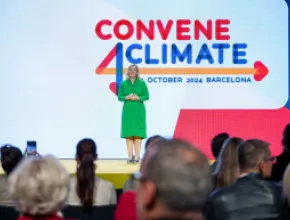They eat right, exercise and get quality sleep while at home. Is it any wonder why participants are asking for the same considerations when traveling and attending a meeting?
Health and wellness are the latest trends in the hospitality industry and professional organizers are learning to incorporate them into meetings and events. While most conferences still require long days, high energy and endless stamina for the average human being to survive, organizers are beginning to integrate healthier practices into their planning.
The phrase “triple bottom line” was coined in the early 1990s and incorporates caring for “people, planet and profit” as the goal of sustainability. If we use the triple bottom line approach to health at events, we are planning for the health of people, planet and profit. If any one of these three is missing, so is the overall health of your event.
Without considering the condition of your participants and your bottom line, your organization cannot sustain the life of the conference.
Likewise, if your budget does not incorporate healthier practices for participants, they will vote with their feet and stop attending. At the same time, constituent groups like Millennials have told us over and over again they support businesses that are concerned with the social and environmental consequences of their actions. They are also voting with their feet.
Thanks to social media and radical transparency, it is quite evident when events are not being good stewards of the health of the planet.
Perhaps the best way to visualize the triple bottom line of a healthy event is to put familiar green meeting practices into the three areas:
Healthy Events for people
- Fresh, local food
- Organic food
- Less meat and more vegetables
- Allergy-free menu options
- Natural daylight
- Fresh air
- Walking instead of shuttlin
- Fewer conference materials to be carried
Healthy Events for the planet
- Fresh, local food: supporting local business, less transportation
- Organic food: less chemicals used
- Less meat and more vegetables: smaller water footprin
- Natural daylight: less energy require
- Fresh air: efficient HVAC systems and windows that open
- Walking: reduced need for shuttling, taxis and rental car
- Fewer conference materials: less paper, conference bags, plastic giveaways to be shipped, stuffed and disposed of
Healthy Events for profit
- Fresh, local food: less transportation cost
- Less meat and more vegetables: less expensive menu items
- Natural daylight: cost savings to the venue
- Fresh air: economic savings by updated systems and windows that open
- Walking: no cost for shuttling, taxis and rental car
- Fewer conference materials: cost savings for fewer items that also need to be shipped, stuffed, distributed and disposed of
As you can see, everyone benefits from healthy events. Taking your key stakeholders’ health and well-being into consideration when planning is a vitally important step in guaranteeing the future of your meeting. Sustainability at its best!
Additional Resources:
Healthy Meeting & Event Guide,
UC Berkeley
Healthy Meeting Toolkit, National Alliance for Nutrition and Activity
Nancy J. Zavada, CMP, president of MeetGreen and a co-founder of the Green Meeting Industry Council, recently co-authored her second book, Simple Steps to Saving Green by Going Green. You can follow Zavada’s blog, “Pretentious Musings of a Green Meetings Martyr,” on MeetingsToday.com.







